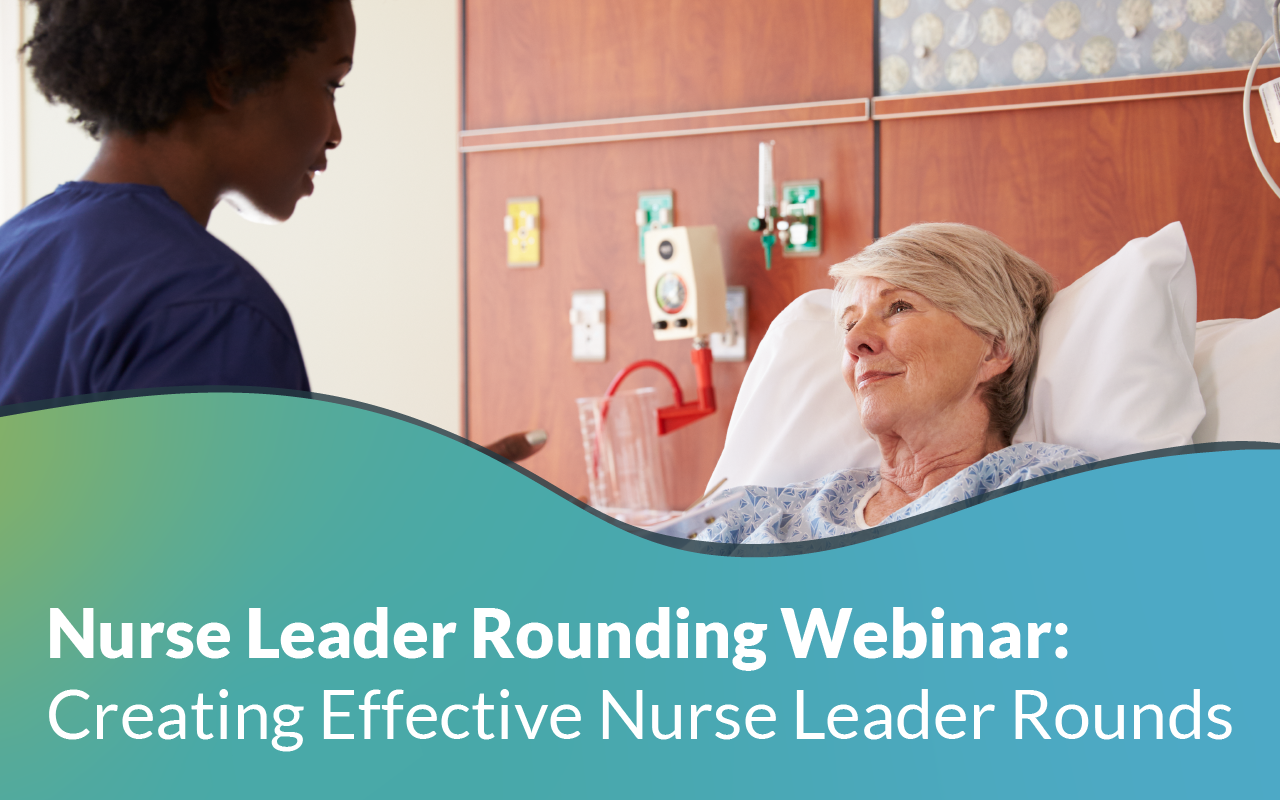
5 min read
The Art and Science of Leadership Rounding
Nobl Health Oct 28, 2021 1:51:00 AM
Often the nature of my work in patient experience calls upon me to reflect about my own experiences as a patient and what the difference was from the experiences that I felt like they truly care for me and understood my needs versus those experiences that made me feel insignificant and without a say.
As someone who has rheumatoid arthritis, I am no stranger to getting my blood drawn. I’ve had my blood drawn in many different healthcare organizations from state-of-the-art facilities with beautiful windows and modern furniture to small lab offices that play rock and roll music at a high volume while they take vial of your blood. In either setting, my experience encompassed much more than just the chair I sat in. My experience was heavily influence by the staff that I interacted with from the person I checked in with when I arrived at the clinic to the phlebotomist who drew my blood. The great words of Maya Angelou still ring true today “People will forget what you said, people will forget what you did but people will never forget how you made them feel”. It was how the staff made me feel that played a big role in my perception of my care.
Moving from inquiring about experiences to influencing experiences

So how does Maya Angelo and my blood draw story relate to rounding? The takeaway is that when we interact with patients as healthcare professionals, we can positively impact their perception of their care experience just by our interaction with them and making them feel important, heard, and understood.
Leadership rounding on patients can have a profound impact on hospital patient satisfaction scores when a leader builds a relationship with the patient based on empathy, respect, and trust. I find many organizations implement a leadership rounding program that is heavily focused on scripted surveys that police elements of the patient’s care. This approach of rapid fire asking yes or no questions may give the impression that you are not confident in the nurses and other staff caring for the patient and may not help with patient experience.
On the other hand, individuals who have mastered leadership rounding often take a different approach, one that is rooted in both art and science. They use soft skills to navigate conversations that gently inquire about the patient experience while making a positive impression on the patient’s perception of their care by means of managing up staff, relationship building and making a personal connection.
4 Unique ways to impact patient satisfaction during leadership rounds

Mastering the skills behind a purposeful leadership round involves not only inquiring about experience but gently influencing experience. Here are four ways you can do this during your leadership rounds.
1. Introduce yourself as a leader
This might sound too simple, but an often-overlooked element of a leadership round is what you say when you first walk into the patient’s room. First, you must establish yourself as someone in a leadership role at the hospital. This shows to the patient that you have authority to make a change. After all, why share a concern if the person can’t do anything about it? The science behind this is that patients who say they were visited by someone in leadership during their inpatient stay have better overall ratings of their experience. The bonus of introducing yourself as a leader in the hospital, is that it can make the patient feel special! I once rounded on a patient who had huge smile and said ‘yesterday, the CEO came to my room and spoke with me’. That one interaction, may just have been the highlight of their hospital stay.
2. Don’t ask every single question related to HCAHPS
While it may be tempting to ask a lot of questions during the round, because you want to ask one for each of the Press Ganey survey questions that you are working on…but don’t do it! Instead, focus on 1-2 areas that appear on your HCAHPS priority index report that are highly correlated to overall rating or likelihood to recommend. By focusing on these key drivers, you will have the largest impact on not only that score but other scores. I recommend changing out these focus questions every quarter. This not only makes sure the leaders are discussing the key drivers with the patients, but it also can reinvigorate the process each quarter by slightly altering the content the leader is discussing with the patient.
3. Utilize your emotional intelligence skills
While you can walk in with a well formulated plan of everything you want to discuss with the patient, some things don’t go as planned. I once cringed during a leader round when a patient had a big concern that they immediately started talking to the manager about. The manager listened to the concern but didn’t show any signs of urgency and after hearing the concern proceeded to ask the well formulated leadership rounding questions that were on the rounding form, including asking the patient if they wanted to recognize someone. As you can guess, the patient didn’t have anyone they wanted to recognize. This leader didn’t leverage their emotional intelligence skills, they were going through the motions—checking the box as one may say.
Now what if the leader, would have input that concern into the computer or tablet and told the patient it was being sent off to the department. The patient could visually see the manager inputting this concern into the computer, so they know it’s being captured. What about having the manager show their concern for the issue as well by letting them know that they will be personally following up with this department. Sharing with the patient that they will be back in tomorrow or later in the day to make sure it’s been resolved. What if the leader, recognized the concern, showed empathy, and verbalized they can understand why the patient was upset? Sometimes, having someone else on your side of the court is all that is needed to make you feel better about a situation. While you can’t ever take away the fact that the patient had an issue during their stay, your awareness, action and how you react to it may just make a big enough impact that you can turn a negative into a positive. The patient will remember how you made them feel in this moment.
4. Pay attention to the subtle word’s patients use
The patients that are overly enthusiastic or very upset are pretty easy to read but what about those patients who don’t tell us much? Or the patients who don’t feel comfortable giving feedback? One of the often-overlooked principles of rounding is paying attention to the subtle words patients use to describe their experiences. If a patient says, things have been OK. Is that OK with you, do you think this patient is going to having a glowing recommendation to their family about your hospital? Probably not. While OK, is not necessarily a negative answer it doesn’t shout enthusiasm and loyalty.
A patient that uses words like okay, good, and doesn’t have any memorable care providers they want to recognize is not going to rate their satisfaction as high as someone who can share a positive story. Look for stories and words that describe excellence and empathy. And if you don’t hear those words, consider what interventions you will do to turn their experience from good to great. How will you make them feel well cared for and special?
As you can see, leadership rounding is much more than just asking a series of survey questions. It’s a process rooted in art and science that can truly impact a patient and may just be the one moment they remember the most during their hospital stay.
To conclude, I will leave you with this, a quote from the book by Chip and Dan Heath, authors of Powerful Moments.
“The ‘occasionally remarkable’ moments shouldn’t be left to chance! They should be planned for, invested in. They are peaks that should be built. And if we fail to do that, look at what we’re left with: mostly forgettable.
I hope I have inspired you to take a closer look at how you are approaching your leadership rounds today and my hope is that with some of these subtle changes you can impact your patients’ experiences.
Written by Katie Haifley, CPXP, Co-founder and COO/CMO Nobl
New Free eBook
Best Practices for Sharing and Reviewing Data from the Nobl Rounding Platform
Beryl Institute Case study
Improved First Impressions at Your Front Door - Patient Ambassador Rounders Enhance the Patient Experience of a Busy Emergency Department
Recent Posts

Five Key Factors to Consider in Pediatric Leadership Rounding



